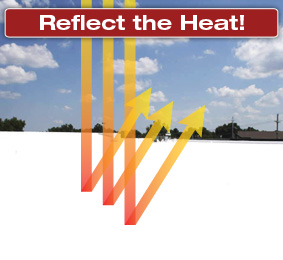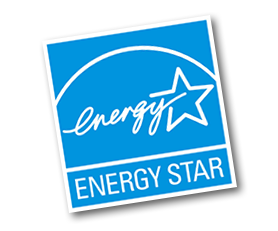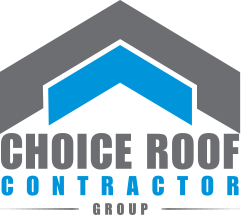 Today we build on top of our blog post about “The Benefits of Energy-Efficient Buildings”.
Today we build on top of our blog post about “The Benefits of Energy-Efficient Buildings”.
Cost reduction is a top priority for any business owner or facility manager. With the appearance of energy-efficient building materials in the construction industry, consumer interest has increased in what energy-efficient roofing (or “cool roofs”), among other materials, can do for cutting costs.
The United States Environmental Protection Agency’s (U.S. EPA) ENERGY STAR® program has been of particular benefit in labeling roof systems that are energy-efficient. But what exactly is the ENERGY STAR® program? And why has it become so relevant in the construction industry? We take a look at some answers below.
What is ENERGY STAR®?
According to EnergyStar.gov, ENERGY STAR® is an EPA-established “voluntary program that helps businesses and individuals save money and protect our climate through superior energy efficiency.”
In its legislation in 2005, the Energy Policy Act, Congress declared ENERGY STAR® to be a “voluntary program to identify and promote energy–efficient products and buildings in order to reduce energy consumption, improve energy security, and reduce pollution through voluntary labeling of or other forms of communication about products and buildings that meet the highest energy efficiency standards.” Since then, thousands of ENERGY STAR® products and services have been brought to market.
American consumers and investors have also adopted stronger consumer commitments to energy-efficient products and services. The public’s knowledge of ENERGY STAR® is shown by the fact that approximately 85 percent of the American public today recognizes the program’s blue label.
“ENERGY STAR Roofs”- Earning Qualification
 For a product or building to be qualified for the ENERGY STAR® logo, it must meet EPA-implement third party testing and certification. The ENERGY STAR® program makes use of testing, third party review, and compliance screening for strengthening consumer trust of qualified products and buildings meeting high energy-saving requirements. Generally speaking, the program breaks down products and buildings into four categories, with products having its own “Products” category and buildings being broken down into “New Homes”, “Commercial Buildings”, and “Industrial Plants” categories. Over 4.5 billion qualified products have been sold in the program’s 20 years of existence, and at present over 1.4 million new homes and over 20,000 facilities have the program’s blue logo.
For a product or building to be qualified for the ENERGY STAR® logo, it must meet EPA-implement third party testing and certification. The ENERGY STAR® program makes use of testing, third party review, and compliance screening for strengthening consumer trust of qualified products and buildings meeting high energy-saving requirements. Generally speaking, the program breaks down products and buildings into four categories, with products having its own “Products” category and buildings being broken down into “New Homes”, “Commercial Buildings”, and “Industrial Plants” categories. Over 4.5 billion qualified products have been sold in the program’s 20 years of existence, and at present over 1.4 million new homes and over 20,000 facilities have the program’s blue logo.
These categories are where the program becomes relevant to the construction industry. Industrial plants must be certified and approved by a professional engineer to meet energy performance score of 75 or higher. They must also pass an EPA compliance screen test. For qualification, commercial buildings must achieve an energy performance score of 75 or higher on Portfolio Manager, an online tool for measuring building energy efficiency, and be verified by a qualified licensed professional.
According to the program, around 40 percent of commercial building space is benchmarked for energy efficiency by the program’s Portfolio Manager tool.
Cool Roofs and Energy-Efficient Buildings
Roofing Services
Our professional commercial roof contractors provide:
- Roof maintenance & repair
- Inspections & leak detection
- Energy efficient roof systems
- Complete roof replacement
- Roof life-extending solutions
For ENERGY STAR® qualification, roofing products must meet “initial and aged solar reflectance values”, or certain rates of reflectivity at different portions of their lifecycle. Another concern the ENERGY STAR® program maintains is a roofing product’s “emittance”, or its “ability to release absorbed heat.” Values between 0% and 100% are used to measure emittance and reflectivity. Roofing products do not have to meet emittance requirements for qualification, but the EPA is looking at adding it as a requirement block for ENERGY STAR® qualification. Most roofing products have emittance values above 85%, with the exception of metal surfaces.
Cool roofs certified by ENERGY STAR® are said to reflect a greater portion of the sun’s rays than less energy-efficient products. Because of this, they can lower rooftop temperatures by up to 100° and reduce maximum-point cooling demand by 10-15%. Many roofing brands meet these qualifications, but some stand out for other benefits.
The Conklin Company and High-Performance Cool Roofs
Conklin’s cool roof systems have been found to recoup energy savings that are so great, building owners find their cool roof systems can pay for themselves in just 5-7 years. These cool roofs reflect up to 85% of the sun’s heat and harmful UV rays.
In addition to great energy efficiency, Conklin cool roofs are known for providing a seamless membrane across an old roof. The end result is that the old roof is protected from the sun’s deteriorating effects, harsh weather conditions, small and large leaks, and the other roofing issues that arise. In fact, Conklin has been the leading innovator in the cool roof systems market since it created the first acrylic roof coating back in the mid-1970s.
The Conklin Advantage for Your Needs
 Should you be interested in learning how a Conklin roof system can benefit your needs, give us a call. Be sure to ask about the commercial roofing industry’s only non-prorated warranties of up to 20 years backing our Conklin roof systems. These warranties cover all materials and labor for their coverage periods.
Should you be interested in learning how a Conklin roof system can benefit your needs, give us a call. Be sure to ask about the commercial roofing industry’s only non-prorated warranties of up to 20 years backing our Conklin roof systems. These warranties cover all materials and labor for their coverage periods.


